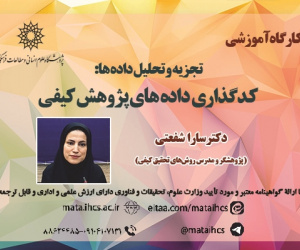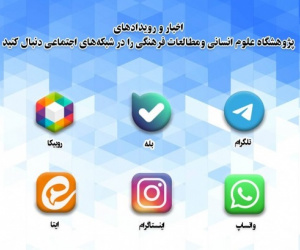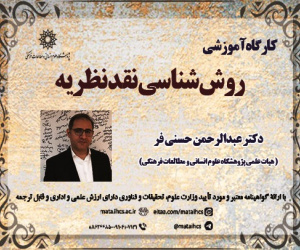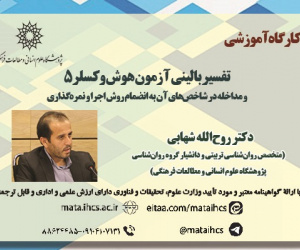تدوین و اعتباریابی بستۀ آموزشی یادگیری سازگار با مغز مبتنی بر نظریۀ کاین و اثربخشی آن بر مجذوبیّت تحصیلی دانش آموزان (مقاله علمی وزارت علوم)
درجه علمی: نشریه علمی (وزارت علوم)
آرشیو
چکیده
این پژوهش با هدف تدوین و اعتباریابی بسته آموزشیِ یادگیری سازگار با مغز مبتنی بر نظریه کاین و اثربخشی آن بر مجذوبیّت تحصیلی دانش آموزان دختر مقطع ابتدایی انجام شد. نمونه آماری به منظور اعتباریابی بسته آموزشی تولید شده شامل 15 نفر از صاحب نظرانی بود که در موضوع یادگیری سازگار با مغز دارای تخصص بودند که به روش هدفمند انتخاب شدند. نمونه آماری در بخش کمی 4۰ نفر از دانش آموزان دوره مقطع ابتدایی منطقه 2 تهران بود که با روش نمونه گیری چندمرحله ای انتخاب شدند. ابزار پژوهش شامل پرسشنامه مجذوبیّت تحصیلی (ریو،2013) بود. این پرسش نامه پیش و پس از اجرای بسته آموزشی، از دو گروه آزمایش و کنترل به عنوان پیش آزمون، پس آزمون و پیگیری پس از 3 ماه گرفته شد. تجزیه و تحلیل آماری در بخش کمّی، با استفاده از تحلیل کوواریانس در نرم افزار SPSS25 انجام شد. نتایج در بخش کیفی نشان داد که که بسته آموزشیِ یادگیری سازگار با مغز مبتنی بر نظریه کاین از روایی مناسبی برخوردار است. در بخش کمّی، نتایج آزمون تحلیل کوواریانس چندمتغیره نشان داد که میانگین مجذوبیّت تحصیلی گروه دریافت کننده آموزش یادگیری سازگار با مغز مبتنی بر نظریه کاین از دانش آموزان در گروه کنترل بیشتر بود (001/0sig = ). تأثیر این مداخله آموزشی پس از گذشت سه ماه نیز پایدار بود. بنابراین بسته آموزشیِ یادگیری سازگار با مغز مبتنی بر نظریه کاین بر مجذوبیّت تحصیلی دانش آموزان دختر مقطع ابتدایی مؤثّر بود.این بسته آموزشی می تواند ابزار مؤثّر و کاربردی در راستای ایجاد یادگیری معنی دار و عملکرد تحصیلی دانش آموزان دختر باشد.Developing and validating of brain-compatible learning training package based on Caine's theory and its effectiveness on academic engagement of students
This research was conducted with the aim of developing and validating the educational package of brain- compatible learning based on Cain's theory and its effectiveness on the academic engagement of elementary school girls. The statistical sample in order to validate the training package produced included 15 experts who have expertise in the subject of brain-compatible learning, who were selected in a purposeful way. The statistical sample in the quantitative section was 40 elementary school students in Tehran's 2nd district, who were selected by multi-stage sampling method. The research tool included the academic engagement questionnaire (Reeve, 2013). This questionnaire was taken from two experimental and control groups before and after the implementation of the educational package as a pre-test, post-test and follow-up after 3 months. Statistical analysis in the quantitative section was performed using covariance analysis in SPSS25 software. The results in the qualitative part showed that the brain-compatible learning package based on Caine's theory has a good validity. In quantitative part, the results of the multivariate covariance analysis test showed that the average academic engagement of the group receiving brain-compatible learning training based on Caine's theory was higher than the students in the control group (sig = 0.001). The effect of this educational intervention was stable after three months. Therefore, the educational package of brain -compatible learning based on Cain's theory was effective on the academic engagement's elementary girl students and can be an effective and practical tool in order to create meaningful learning and academic performance of female students.







